
Frozen Moments - Winter Wildlife Photography
By Shiv Gilmore | Digital Marketing Assistant, Holdan
This time of year can be challenging for wildlife photographers with harsh weather conditions, freezing temperatures and deep snow likely to cause a few problems whilst out in the field. Looking on the flip side though, the outcome often proves that the extra drama provided by the weather, with intricate snowflakes and pristine blankets of snow, adds a refreshing element to wildlife photographs, which just makes this time of year all the more breath-taking.
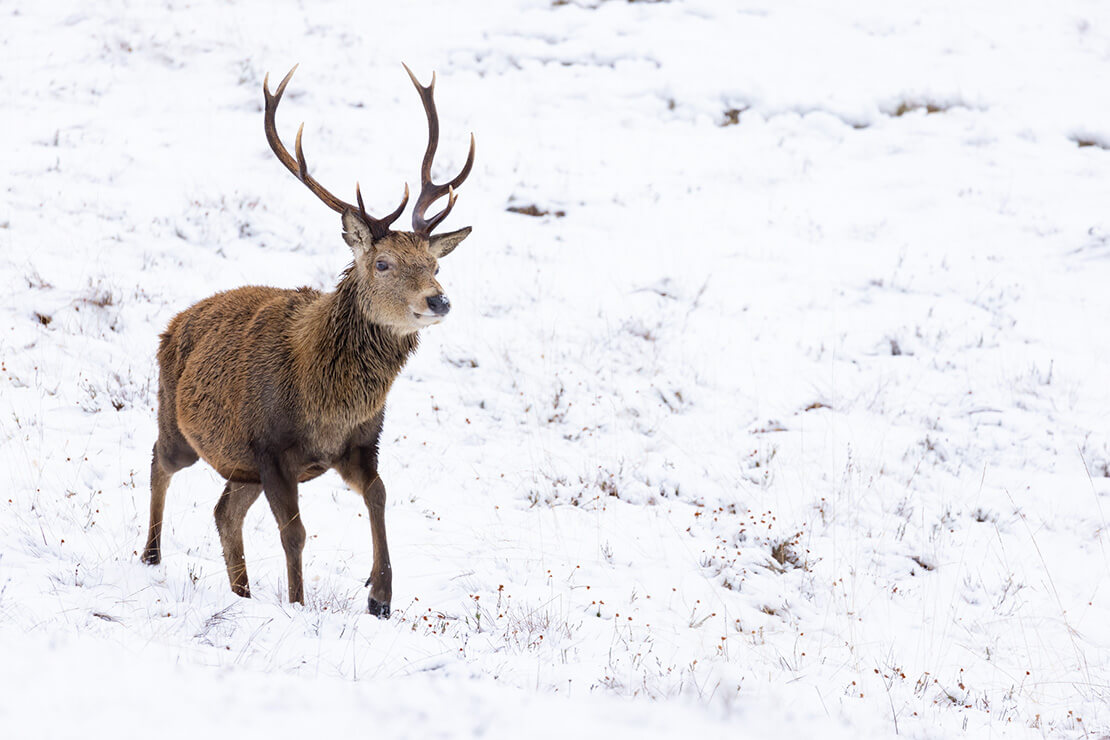
Wild Arena
We catch up with Holdan Ambassadors and Wildlife Photographer couple David and Janet Southard from Wild Arena to shed some light on how to combat the elements while out in those snowy landscapes.
Wild Arena is a photographic company based in northern Scotland, founded by David and Janet in 2003. They pride themselves on using their extensive experience and knowledge to expand their client’s enjoyment of photography and the natural world.
Make sure you are prepared for the cold.
Before you even head outdoors, particularly when there is snow on the ground it is important to make sure you are prepared for the cold. There is nothing worse than having to head home early because you can’t feel your fingers or toes anymore.
What gear do you wear out in the snow?
Being warm and dry is indeed very important when being out in the field and layering is the best way to achieve this. For example, you can take off layers if you’re walking and then add more if you're stationary. Thermal undergarments will keep you nice and warm and outdoor layers that are waterproof will keep you nice and dry, we use Paramo Velez adventure smocks and Cascada trousers. Don’t forget about your feet too, if they let in the snow or water and get wet, you’ll soon be heading for home. If it is deep snow and you’re not waking all day we use Muck boot - Arctic Sport wellingtons as a great option. If you are sitting in a hide then a sleeping bag or rug over you is a great idea too, but you can also get heated jackets, gloves, and socks, you’ll cool down very quickly if you’re not on the move.
Exposure!
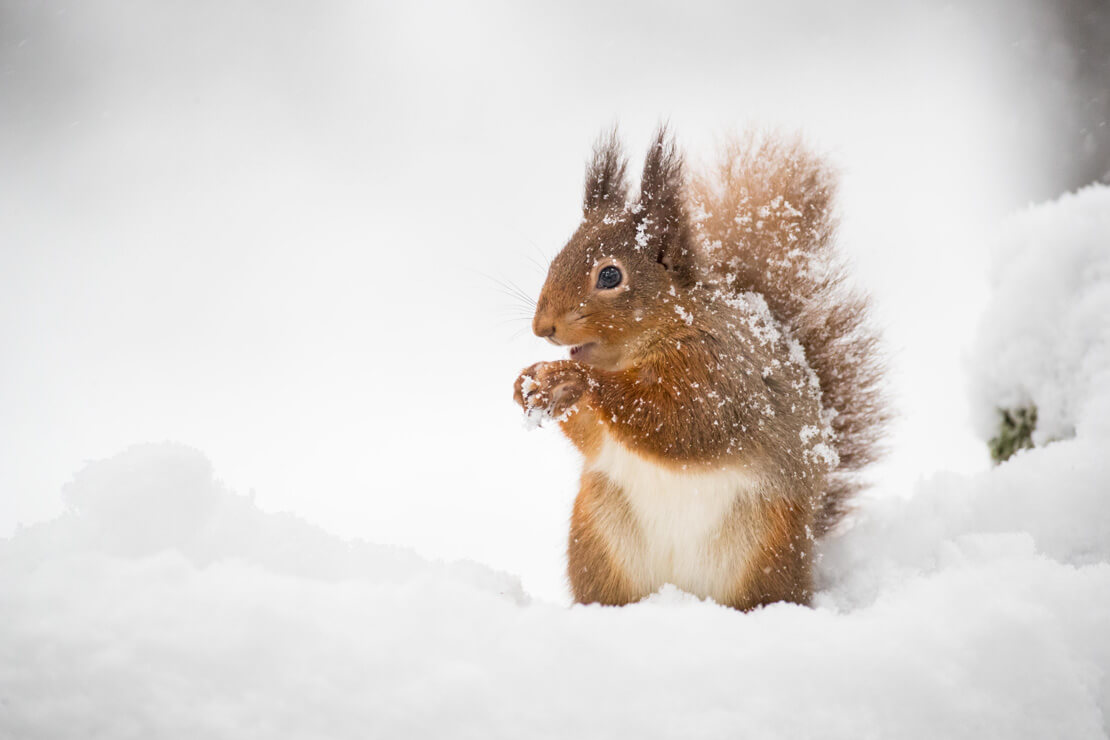
One of the main challenges a wildlife photographer faces in the winter is exposing the snow correctly, cameras will always try to achieve that mid-tone neutral grey if left to their own devices. In any other circumstances, this default exposure might help in avoiding burnt out highlights, although when shooting snow, can result in under-exposed and dull shots.
To compensate for this, you can overexpose by 1-2 stops to make sure the white colour is more striking. Ideally, you’d aim to see detail in the snow but, even a large blown-out area is more appealing to look at in a snowy scene than a washed-out grey tone.
Cold + Equipment
Another challenge to be aware of is how the cold can affect your gear. Freezing temperatures can zap your battery life quickly, and the condensation caused by bringing your camera in from the cold can do damage. Also think about keeping your camera body and lens dry while outdoors.
How does your equipment conquer the cold?
The cold of course does have an impact on camera equipment but mostly the batteries, we carry our spare batteries in an internal pocket of our coats to keep them warmer. You can then keep swapping them and as they warm up, they will start to work again. You will also want to keep the camera dry, falling snow will melt on the camera so a rain cover will help with this. We also tend to have a large shammy leather cloth in the camera bags as an absorbent wraparound for any damp gear.
Composition & Focus
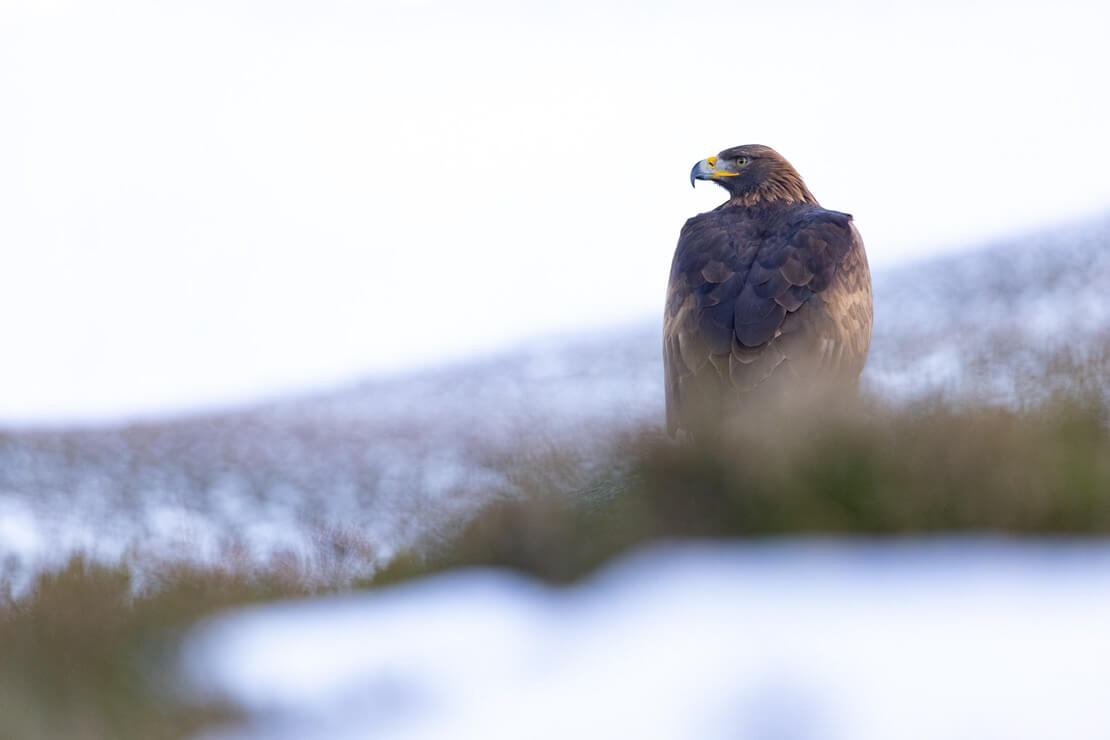
No matter where you are shooting your wildlife shots, you need to have a good look around the viewfinder to make sure there’s nothing in the background that will distract the viewer. Throwing the background out of focus can look great, however, this can cause parts of the subject, particularly when working with small subjects such as birds, to also go out of focus. If this happens, try using a slightly smaller aperture as getting the subject sharp is what is most important.
You may have to work quickly but this does not mean that you should forget about the composition altogether. Do give your subject space and try not to capture them looking out of frame as this can be disengaging for the viewer.
Do shoot whilst they’re in different positions too as you may find a side profile shot works much better than one where they’re head-on.
By far the most frustrating obstacle when trying to photograph wildlife when it’s snowing is the snowflakes themselves. The issue arises when snow is falling thick and hard, trying to autofocus on your subject when there are thousands of snowflakes between you and them can seem near impossible.
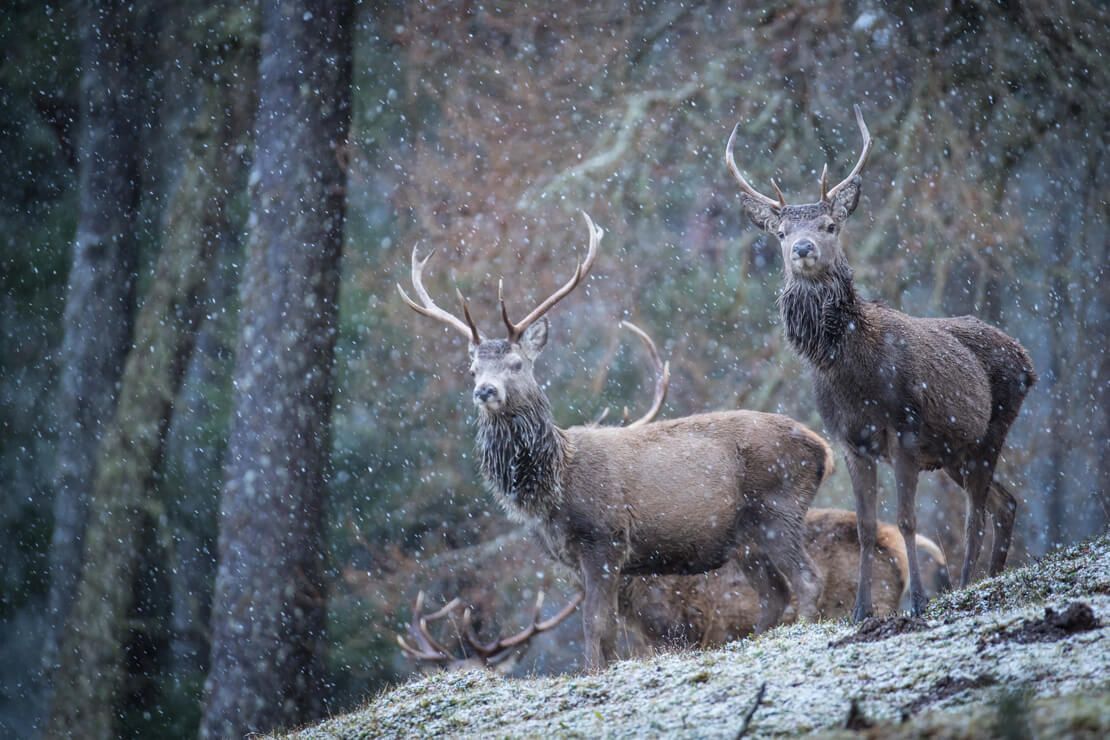
Your camera will constantly try to focus on individual snowflakes as they pass through the focus point – a quick fix is to switch over to manual focus and hope that your subject stays still for you.
A last resort is to “fire off” a burst in autofocus and hope that at least a few of the shots come out sharp. As you can imagine the hit rate is extremely low when you do this – so we wouldn’t recommend using this method unless you are completely out of options.
A technique we have often used is ‘shooting as you manually pull focus’, if you manually control and move the focus backwards and forwards whilst taking a burst of pictures, hopefully, your subject will come in and out of focus, so some of your images will be sharp. Of course, with digital cards being relatively cheap you may take a lot of pictures, but it will be worth if for those few sharp images.
A way to make sure that you can focus in on your subject and ensure you are creating the best composition is by using an on-camera monitor such as the Atomos SHINOBI. The SHINOBI can display the closet representation of what will be captured by the camera, so you are not second-guessing your shots whilst out in the field. When attached to your camera, the size and weight of your monitor matter. The SHINOBI is only 7oz, the centre mount battery makes balancing easy and maneuverability instant. It can become an incredibly useful piece of kit when trying to get that perfect shot quickly.
Using Snow to your Advantage
Finding your target species is often a lot easier in the snow, especially if you are searching for something that is more elusive. A fresh blanket of snow provides photographers with a blank canvas of information, and so much of an animal’s day can be understood by looking at the tracks they leave behind.
Even if the tracks are not fresh – the chances of finding and catching up to the animal are slim - they can really help you learn about the habits of that species. By seeing where they bedded down for the night, or where they hunted – we gain a much greater understanding of their behaviour, which increases your chances of finding them on another day. You can research wildlife creatures’ habits online or in books, but nothing can beat the first-hand knowledge you gain through hard work on location.
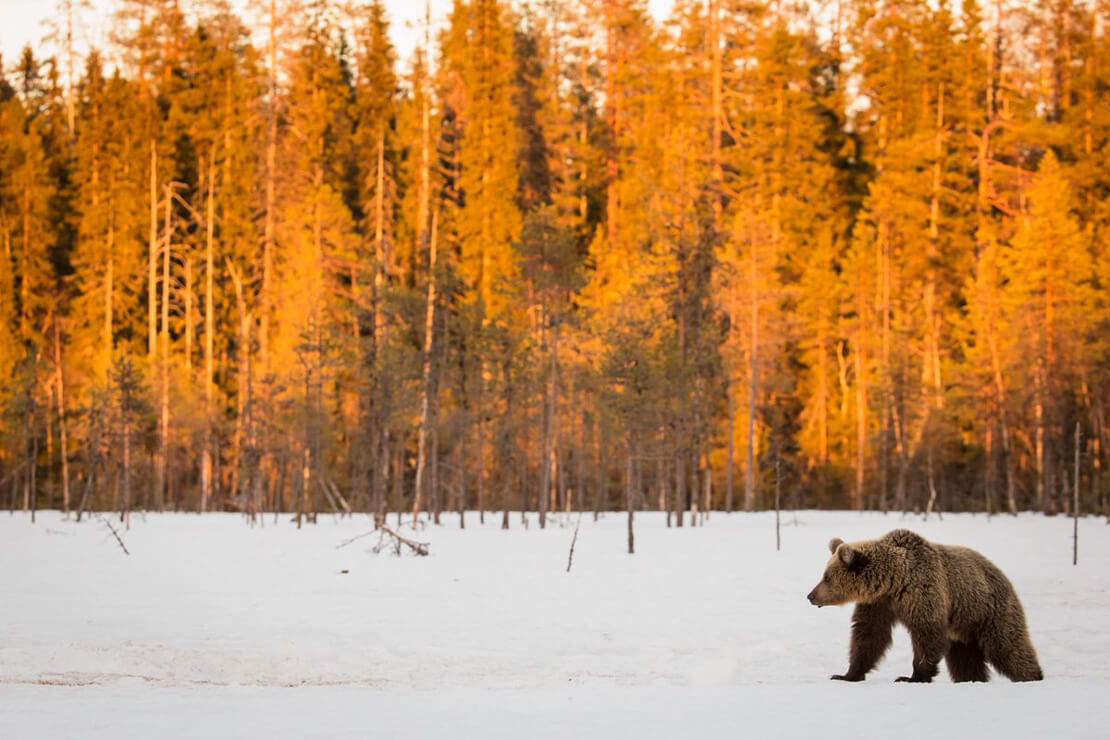
Conclusion
Not that many places in the UK have had much snow in the past years but when snow does fall it gives wildlife photographers the chance to shoot against a clutter-free background that really embodies the essence of winter. Snow also gives the chance to find tracks wildlife have left behind – so find a well-trodden path and set up nearby. Dawn and dusk are good times to be out but do wrap up warm and take a head torch with you so you can see what you are doing as the sun rises late and sets early. Pay attention to where the wind is blowing too as wildlife is very good at picking up scents.
Do be aware that snow can “confuse” your camera and you can end up with shots that are underexposed. Keep checking your histogram to make sure your exposure settings are OK and use exposure compensation if needs be to brighten your shot.
27 Nov 2025
PTZOptics: Versatile, Professional PTZ Solutions for Every Production Environment
19 Nov 2025
Expanding Possibilities: Introducing Sonnet Technologies’ High-Performance Solutions for Apple and Professional Workflows
14 Nov 2025
Take Command of Your Creativity: Meet the Elgato Stream Deck Family
26 Sep 2025
Lumens VC-TR60A PTZ Camera Earns Microsoft Teams Certification




